|
|
Chapter Seven: A New Record Deal and Album (1978-1979)
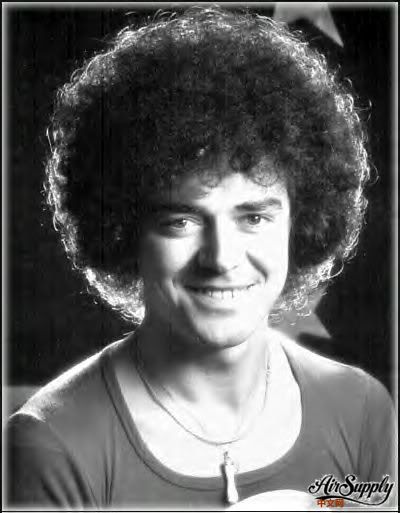
In September of 1978, Air Supply signed a record deal with Big Time Phonograph Record Co., a new label started by Air Supply’s managers, Lance Reynolds and Fred Bestall. Big Time was a division of independent Australian label Wizard Records, owned by Robie Porter and Steve Binder. Porter was also a principal in Big Time. Distribution and manufacturing was handled by either Nippon Phonogram, EMI or Polygram, depending on the country of release. According to the managers, the aim of Big Time was to keep its roster small and personal. “We signed with Polygram as the first band on their Big Time Phonograph recording company label,” said Russell. “The new deal gave us a lot more freedom in the studio and more control over the production. It was also a lot better financially.”
“Robie and I really bonded, in that he was really a genius at taking talent and molding them,” said American producer and director Steve Binder. “He had all the tools as a record producer, a mentor and as a businessman. He had big success with Daddy Cool and Rick Springfield in America, and it was near impossible in the American market to take an unknown and make them stars so quickly. Some of the artists resented him because he was so talented. In the studio he was a master at knowing when to punch in, when to change the lines and arrangements if needed.”
With a recording contract in place, Air Supply focused their attention on the new record, which was already several months in the making. Considering how quickly the first three records came together, this project must have felt like an eternity. In October, the band returned to the Sydney pub and club circuit, at places like the Coogee Oceanic Hotel and the Parramatta War & Peace Hotel. They performed some of their new material, including an upbeat track called ‘I Don’t Wanna Lose You.’ “We are closing the show with that song,” said Russell, “and it’s another one of my favourites at the moment. It’s a rock and roll song and it has that predominant guitar sound.”
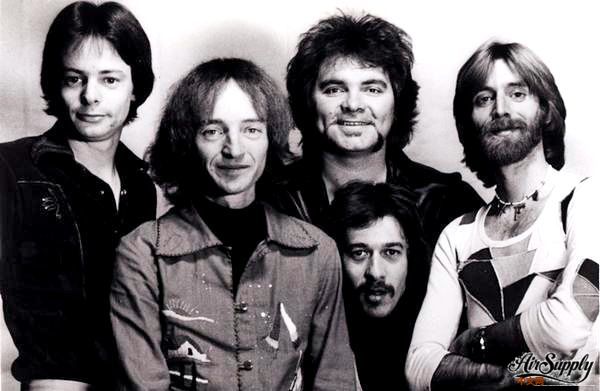
Southern Star Band - (L) T. Emmanuel, (R) F. Esler-Smith
Air Supply was performing without a keyboard player, by choice, and re-united with Frank Esler-Smith in a studio role. Esler-Smith, who had been working mostly with the Marcia Hines Band and Doug Parkinson’s Southern Star Band, played keyboards on three tracks. Keyboardist Cos Russo (former member of Adelaide-based band Sailor and the David Ninnes band) played on another three, and guitarist Tommy Emmanuel contributed to ‘Lost In Love.’ Emmanuel was a member of the short-lived group Goldrush, and a session player with The Southern Star Band at the time, and was considered one of Australia’s most accomplished session guitarists, having gained the nickname ‘One-Take Tommy.’ His unique guitar style, which involved playing bass with the thumb and melody parts with the first two or three fingers at the same time, was an important addition on ‘Lost In Love.’ “The acoustic guitar is like an orchestra,” said Emmanuel. “It’s got everything. It sounds completely self-contained. I saved [Air Supply] a lot of money because I did things so quickly. These guys were all friends of mine, and they didn’t actually pay me for playing on ‘Lost In Love.’ I did them a favour by coming in and helping them out.” According to Charles Fisher, the total cost to produce the single ‘Lost In Love’ was just $1,700.
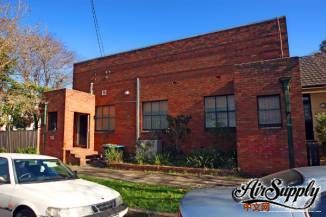
Trafalgar Studios
The new album was produced by Charles Fisher and engineered by Peter Walker at Trafalgar Studios in Sydney. Fisher, referred to in Australia as ‘The Song Doctor,’ was best known for his work with the Australian band Ol’ 55. He later went on to produce a successful album for Savage Garden in 1997, winning an ARIA (Australian Recording Industry Association) award for producer of the year. Air Supply must have had tremendous respect for Fisher as a producer, because they knew that their next album was do or die for the band.
Trafalgar Studios, located in Sydney’s inner South-Western suburbs, was opened in the mid-1970s by Fisher. It quickly became one of Australia’s premier independent recording facilities despite its tiny footprint and proximity to residential homes. Graham often talked about the lack of space it provided: “I had half an inch between the end of my guitar and the studio wall. The insulation on the walls was made of cardboard and egg cartons, and there were cats running all over the place.” Trafalgar Studios was located under a flight path to Sydney airport, so extra care went into sound proofing.
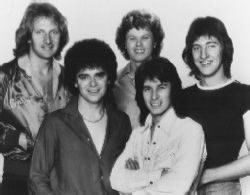
Graham, Russell, David, Ralph, Brian
Charles Fisher believed that 24-track Trafalgar Studios was best suited for Air Supply because the band was looking for a new sound. “While a certain technical standard is obviously necessary,” said Fisher, “I do not believe that lavish studios make hits. Virtually every big rock act in this country has recorded at Trafalgar because it is a true rock and roll studio. Every staff member, including administrative staff, has been on the road with bands and knows how musicians think. At Trafalgar there are no rules, artists have total freedom of hours, behavior, equipment and everything else.” These things all factored into Air Supply’s decision to use Fisher as producer, and to record at his studio. Years later, Fisher said that working with Air Supply was a massive career highlight for himself.
“In the past, especially in the final stages of being with our previous record company, we didn’t really have enough artistic control,” said Russell. “This gave us an opportunity to make sure everything was as good as it could be. In fact, the album was on and off for six or seven months in the making, which is a long time here. The new album is a complete change for us. There won’t be the same sort of lush orchestral backing tracks as we had before. We’re trying for a more live sound with more feel. Half the new album is already down, mostly material written by Graham, with a couple co-written by Brian [Hamilton]. We’ll pick a single soon, and it should be out around the end of next month. We’ve had good chart success in Asia and there’s talk of a tour there later on, but at the moment our efforts will be concentrated on Australia. Once the single is out, we’ll be back on the road promoting it and hopefully we’ll be able to do a couple of our own concerts.”
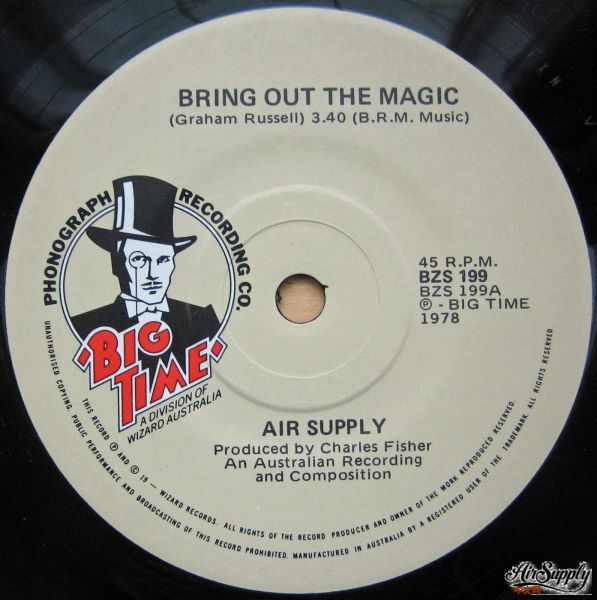
'Bring Out The Magic'
In November 1978, Big Time released the launch single, ‘Bring Out The Magic,’ with a promotional video to show the world that Air Supply was back. Despite significant airplay in parts of Australia, and in New Zealand five months later, the song did not enter most of the important music charts. It reached #24 on Canberra’s 2CA Top 30 on March 22, 1979. Looking back, drummer Ralph Cooper thought the single had some positives; “People tend to forget very quickly,” he said. “So I think a lot of people were made aware that the band was back, and new.”
The Australian music landscape was in a state of disarray in 1978, and perhaps contributed to the poor showing of ‘Bring Out The Magic.’ Russell Powers, the music director of leading Sydney station 2SM, blamed the public for what was the worst year since 1965 for Australian recording success. “Australian bands are better than ever before,” he said, “they are delivering the goods on record and radio is supporting them, the problem is - the public isn’t. I think it all comes down to priorities. Money is tight and instead of buying two to three albums a week, the average buyer is only shelling out for one, and it’s more often than not a ‘biggie’ like ‘Grease’ or ‘Saturday Night Fever,’ and not an Oz album. As far as I’m concerned, the single is dead. The public wants albums not singles. During the six months that we have been compiling our combined (LP and single) chart, there has not been one single in the top three, which must say something.”
“Yeah, I thought [‘Bring Out The Magic’] would be much bigger,” said Russell, “but I also had a few reservations. When you’re in a situation where you haven’t had any records out for a long time, and a band has been predominantly known for doing ballads, I hate to put out a song that sounds like something from the band Boston, which can throw people off.”
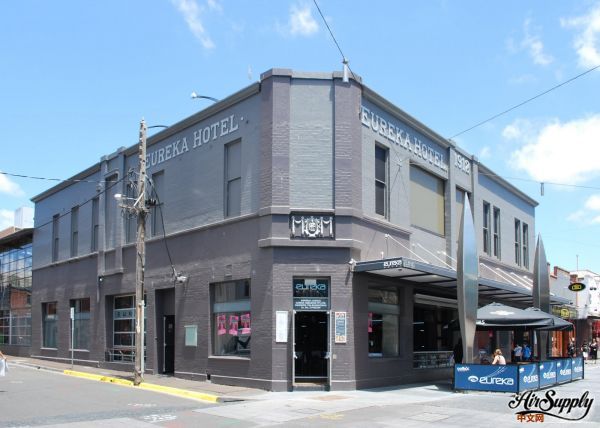
Eureke Hotel - Geelong, Australia
In support of their single, Air Supply played shows in Melbourne and its suburbs between October, 1978 and January, 1979. They performed mostly in hotels, such as the Doncaster Inn, Fern Tree Gully Hotel, Eureke Hotel and South Six Hotel. The live shows included guitarist David Moyse, drummer Ralph Cooper and bassist Brian Hamilton, and attracted mostly small crowds. The band looked and sounded much different from their previous tours. “The whole image is different this time,” said Graham. “We’re out of the white stuff and the glittery sequined hot pants thing. We’ve gone through that and it was inevitable to do all that. The image is more of a down to earth thing now.”
Russell felt they had developed a different sound, which better suited their new image; “I think our sound over there [in America], and to a slightly lesser degree here [in Australia] because physically we have one less guitarist now, is just more basic. I think touring with somebody like Rod Stewart, and we watched every single show, it’s a rock and roll atmosphere. I think it changed our music a lot in that regard. Also, at the moment we don’t use keyboards on stage. There is much more emphasis on the rhythm section and guitar sounds. The emphasis obviously is still on vocals because its always been a vocal band, and there are three very strong singers in the band, so we use that as much as we can.”
On January 7, 1979, Air Supply headlined a free concert at the annual Festival of Sydney. The early evening concert took place at the outdoor Opera House forecourt and featured a wide range of jazz and folk artists, including Brenda Kristin, Vin Garbutt and Davey Graham.
In late January, Reynolds and Bestall promoted Air Supply’s new material at Midem, an important music industry trade fair held annually in France. April Music, the publishing arm of CBS Records, was also at the conference to promote Australian artists. April’s repertoire included over 300 songs, but they brought no more than 20 of their best for selling. This included material from Air Supply, Contraband, Dragon and Malcolm McCallum.
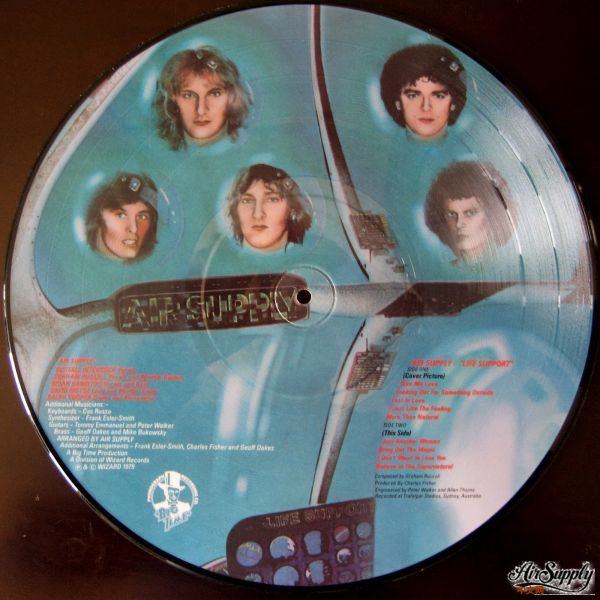
'Life Support' Picture LP
In early April, Air Supply had completed the basic tracks for their album, but they were worried about not having an up-vibe single. So they went back into the studio to cut a seven-minute song, ‘Can’t Get Excited,’ down to radio station-acceptable three minutes. Engineer Peter Walker calculated that if they took a few pieces out and eliminated a verse, they could get it down to three and a half minutes. But Graham believed it needed the full seven minutes to develop, and refused to alter the song. So at 3 a.m. on a Thursday night, after a few verbal brawls, several takes, pizzas, discussions with producer Charles Fisher, and more calculations from Walker, they decided to leave the song as is, but to exclude it from the album altogether. A frustrated Charles Fisher said, “I’m finishing the album without them,” and he mixed it over the weekend before heading to Los Angeles to cut it at Kendon Studio.
For Air Supply’s forthcoming album, Big Time and Wizard took a chance on a new patented technology entering the Australian landscape. A Sydney-based manufacturing firm invented a new technique for producing picture LPs to help the Australian market better compete with higher priced picture imports, brought in by majors such as WEA, EMI and RCA. Picture singles were popular in the early 70s in Australia, but this new technology marked the beginning of local picture LP pressing. Wizard was the first label to try the new technology with three of its own artists: Air Supply, Marcia Hines and the Nauts. These records were priced at $8.50 compared with the $15.99 tag of the imports - which had been selling well. Wizard claimed that its pressing quality was equivalent to standard black vinyl stock, and had set no quantity limit on the items, which would be sold in standard-printed sleeves rather than those with cut-out fronts.
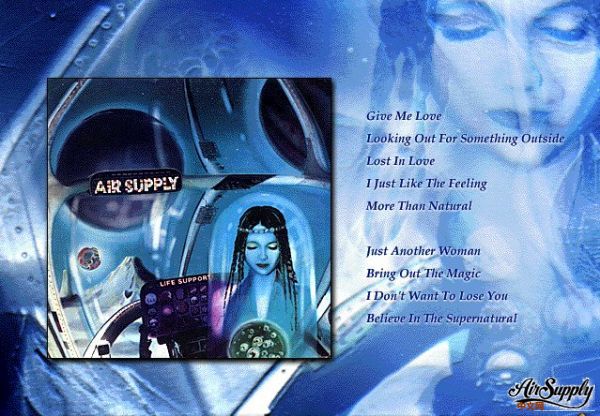
The band was excited about the new technology. “We have been very secretive about it over the last few months,” explained Russell, “but we are pleased to announce that [‘Life Support’] will in fact be a picture disc. So the cover the album comes in will also appear on the actual record. This is the first picture disc from an Australian band so we are very interested in the reaction it gets.”
Despite Wizard’s assurance that the quality of picture LPs was equal to that of traditional vinyl, there was some debate in the studio over whether the record quality would suffer. Engineer Peter Walker believed it would, because the production process with picture discs involved stamping, as opposed to pressing. Wizard promotions officer Alan Black was not even convinced that such vinyl variations would actually sell more records, but admitted that his label’s picture disk debut would create new interest and awareness in Australian product at point of sale.
‘Life Support’ (BZL 233) was released in late April. On one side of the picture disc, out of a deep mystic blue, a girl in a spaceship gazes into a crystal ball. On the other side, out of the same blue, five band members (heads encased in see-through bubbles) gaze into the spaceship. The artwork was created by Bondi resident Paul Fullbrook, who‘s large collection of blue oceanic paintings was recognized worldwide. ‘Life Support’ was advertised as a concept album, which Fullbrook‘s cover helped explain. “There are one or two songs that have extraterrestrial overtones,” said Graham. “We run through quite a few different things. ‘Believe In The Supernatural’ is a track which might open a few eyes. It’s got a very spacey feel and it’s something of a departure for us.”
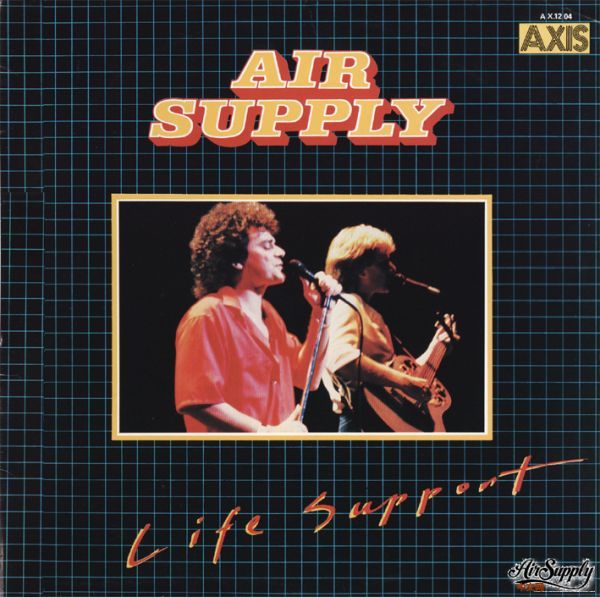
'Life Support' LP - AXIS
‘Life Support’ was released first in Australia and New Zealand, with possible U.S., U.K., South Africa and Japan distribution later. The second single, ‘Lost In Love’ (BZS 306), was released with the album and included ‘Believer’ on the flip-side of the commercial single. ‘Believer’ was not included on the Australian release of ‘Life Support,’ but was later included on the 1983 Japanese LP (20PP-53). ‘Life Support’ was later reissued in Australia with different cover art and on traditional black vinyl by EMI’s budget label Axis Records (AX.1204).
Album reviews were mostly positive. Many critics, some of who thought that Air Supply had broken up, were impressed that the band was able to come back after its staggering decline over the previous two years. Most bands would have simply given up.
The pair obviously have been through a lot of together, it is reflected in their work. There was a sort of youthful innocence about ‘Love And Other Bruises’ that is missing in the album. But the musicianship is there still, augmented by such craftsman as Frank Esler-Smith. Here are nine tracks, written by Graham Russell and released on a picture disk, which should lead to a few of the band’s critics listening again. The band’s new single, ‘Lost In Love,’ is included in the tracks on this album, along with such excellent tracks as ‘Bring Out The Magic’ and ‘Believe In The Supernatural.’ The combination of Graham Russell’s melodies, Russell Hitchcock’s vocals and the band’s backing vocals is a compelling one. But, in all, the album remains a little patchy. There is something missing which is hard to identify - the quality which is no longer there was on the single ‘Love And Other Bruises.’ Perhaps the band will be able to recapture it now the worries of labels, managers and line-up are behind it. - Christine Hogan, Sydney Morning Herald
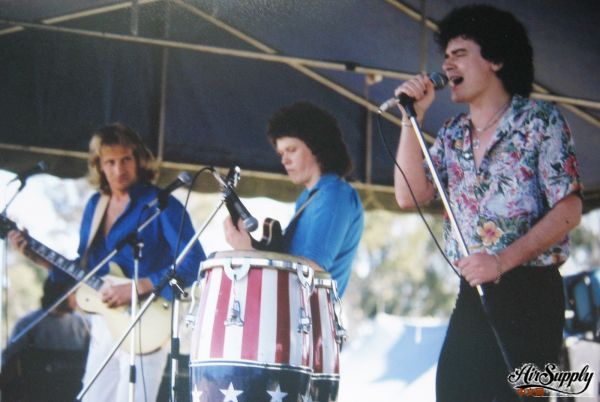
Graham, David Moyse, Russell 1979 (PIC: Bob King)
The album shows two sides of Air Supply. There’s five songs that are syrupy, wimpy and over-produced. The strings dominate the band and the result is a series of forgettable tunes. Side two is raw and basic. No strings, just prominent guitar from Graham Russell and David Moyse with lyrics of the lost love and romance variety sung with enough passion to convince the cynical you that the singer means it. Russell Hitchcock sounds like Eric Carmen in full flight. Listening to the guitar playing, I’m reminded of Charles Fisher sitting behind the controls in the studio urging the guitarists to hit the strings like Townshend: ‘Hit’em like you mean it,’ he screams. ‘OK gentleman, let men make records,’ he announces to Air Supply as the eleventh attempt at getting the rhythm track down begins. - Stuart Coupe, RAM
Picture records are actually an Oz invention. In America they’re used as promotional devices, but they carry a warning: the listening results are not comparable with regular vinyl. The Wizard press release says they’ve overcome the technical problems and ‘Life Support’ will sound as good, if not better, than regular black. It doesn’t, actually. There’s a lot more hiss and static, the result being the album seems to have lost a lot of its production crispness. It’s not a major point but it is irritating for someone who’s listening carefully to an album, through headphones especially. And it‘s particularly unfortunate the new technology doesn’t work 100% for Air Supply, for the songs show every indication of having been worked on painstakingly to achieve something they’ve never reached before - a sharp pop sound with a fulsome rock base. - Anthony O‘Grady, RAM
‘Lost In Love’ was a rather long song, at over five minutes, but it caught the attention of radio in Australia and New Zealand. The song entered the David Kent Music Report on May 21 and charted for 18 weeks, peaking at #13 on July 16. It reached #7 in New Zealand. ‘Lost In Love’ helped propel ‘Life Support’ up the album charts, where it peaked at #6 on Canberra’s 2CA Top Albums.
“When we started ‘Lost In Love’ we felt it had something special about it as compared to the other tracks,” said Ralph Cooper. “It started out as more of a country thing. We did two takes, which took about fifteen minutes. We went and listened to them both, and we all looked at each other and asked which one was better. I thought they were both pretty decent, but we went with number two. There’s a lot of keyboard work. Frank Esler-Smith came into the studio and layered all those keyboards on, which gave it that wonderful sound. It really changed the nature of the track completely. Tommy Emmanuel, a fantastic guitar player, came in and put in a lot of beautiful acoustics. Graham played some terrific rhythm on it. Russell did a lot of layered vocals. When it was finished we were all rolling in the isles because we thought it was great. It has the same kind of magic perhaps that ‘Love And Other Bruises’ had.”
“‘Lost In Love’ is a ballad and pretty heavy production number,” said Graham. “It put us back on top again in Australia. It certainly proved that we had not broken up, as some people thought at the time. Once you have a hit record everything changes. You’re not struggling anymore. It helps you get more money for your live shows. In those days in Australia we were making about $200 a night for the whole band and we had to rent a PA. But having a hit record made it a little easier. In Australia that is. You have a hit record in the United States and everything changes. That’s what we really wanted, to have a hit overseas.”
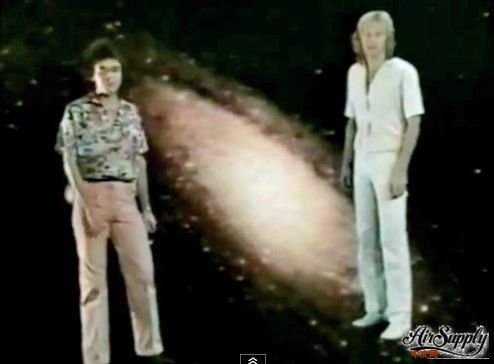
'Lost In Love' Video (1979)
A promotional video for ‘Lost In Love’ made it clear that Air Supply was marketing themselves as a duo again. After just a short stint in the band, bassist/vocalist Brian Hamilton left Air Supply prior to the release of ‘Life Support,’ and joined the Renee Geyer band. He was replaced for a short period by Australian bassist Jamie Rogers, who appeared in the ‘Lost In Love’ music video.
Melbourne-based bassist Criston Barker soon replaced Jamie Rogers. “I grew up in Melbourne working in rock and roll bands all my life,” said Barker. “I had worked with the band Ash and Freeway up until 1979 when I moved to Sydney. My manager at the time, a guy named Sam Righi, said that there was not much going on in Sydney, but there’s this band Air Supply that I could work with if I wanted. I told him that I could not work with these guys, but he said, ‘Look, they are just about to record an album, so it would be worth your while.’ So I said, ‘OK, I will give it a go.’ So I joined them.”

Criston Barker with Freeway ('75)
Throughout June and July, Air Supply played shows at colleges, hotels and RSL clubs in Sydney, Melbourne and Canberra. They played the Bondi Lifesaver, Sydney’s most renowned rock venue, on July 8. On July 28th, Air Supply played at a 2SM sponsored concert at the Sydney Hordern Pavilion with Jon English and Gillian Eastoe. Three days later they opened for Split Enz at Melbourne State College. On August 21, Air Supply were guest performers on the popular Australian television comedy The Paul Hogan Show.
Earlier in the year, Graham wrote and submitted a song, ‘Letting My Hair Down,’ to the World Popular Song Festival in Tokyo, Japan. The annual competition was an international song contest held each November, where the winners from each participating country competed in Japan. It was no accident that for many artists the Festival was an opportunity to turn their dreams into reality. It served as a springboard for launching artists into stardom and gave birth to great new songs. In addition to providing both promotional and technical assistance, prize winners were also offered exposure with a concert tour in Japan. The Australian Popular Song Festival took place on August 11, 1979, and was televised on ATV0 in Melbourne. Live performances included Ray Burgess, Tony Pantano, Delilah, Mary Jane Boyd and Russell Hitchcock. As one of the finalists, Russell sang ‘Letting My Hair Down,’ and finished as runner-up to ‘Here And Now’ by Delilah. Delilah represented Australia at the World Popular Song Festival in Japan, where she finished ninth behind winner Bonnie Tyler and the song ‘Sitting On The Edge Of The Ocean.’ ‘Letting My Hair Down’ was later released by Air Supply as ‘Having You Near Me’ on their 1980 ‘Lost In Love’ album.
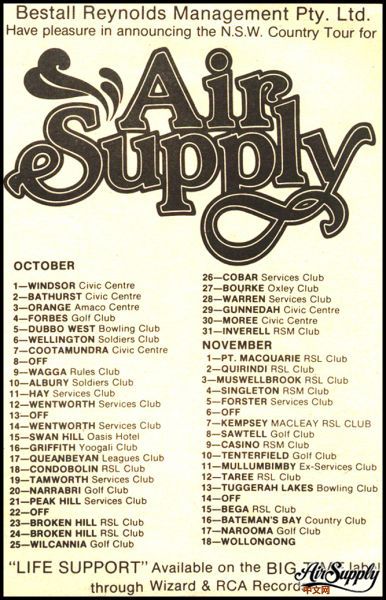
Oct-Nov Tour Schedule
Air Supply began an ambitious six-week country tour of New South Wales on October 1, hoping to capitalize on the success of ‘Lost In Love.’ The tour was to include 44 shows in total, all at smaller capacity venues such as golf and bowling clubs, country clubs and RSL clubs. But after just a few shows, the tour was cancelled. “It was a disaster,” said Russell. “There were eleven of us in a 15-seat bus, driving eight hours between towns. We would get to a town and there would be ten people at the show. We went to one place we were scheduled to play, and the doors were locked and the lights were out. Needless to say, that tour was canceled very early. That’s Australia for you. We have played every conceivable place, bar, dive. We have played on the steps of the Opera House to 90,000 people and we have played to just six people. We played at a hotel on the corner of Oxford and Taylor Square one night and nobody showed up. That was funny because we went there and the equipment was set up, and it was like eight o’clock, and the guys says he would pay us half the fee if we simply went home. We said, ‘No, we will play.’ We did the whole show to nobody. It was just like a rehearsal. It was a laugh!”
“It got to a point where we thought we were good,” said Ralph Cooper. “We thought we had good songs. We ended up doing a show in Sydney that was to a really big audience, I think about 20,000 people. A lot of bands were on that day, and we played great. We felt really good about it, but then the band kind of broke up.”
‘Lost In Love’ fell out of the charts and the money generated from the single could not sustain the band. So again, they went their separate ways. Meanwhile, Robie Porter still pursued opportunities for them overseas, and he worked with Russell on solo material. They hoped to release a single, and were in negotiations to record an old Dusty Springfield hit. Air Supply bassist Criston Barker worked on solo material of his own.
In late October, Wizard Records struck a distribution deal with Arista Records, a top U.S. recording company who had recently been sold by Columbia Pictures and Clive Davis to Bertelsmann AG (later known as the Bertelsmann Music Group or BMG). The deal came together while Graham was in England searching for ways to market his songs, and the rest of the band at home collecting unemployment. Suddenly there was a glimmer of hope for Air Supply.
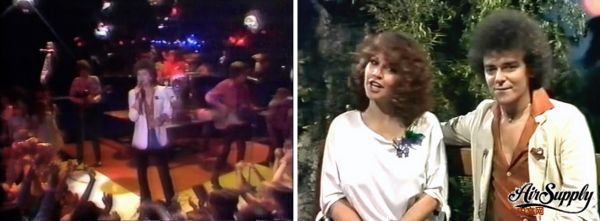
Russell & Christie Allen Host Countdown
Big Time Records pushed forward in Australia and released a third single, ‘Just Another Woman,’ in October, but the disco-inspired song failed to chart. On November 4, Russell co-hosted and performed ‘Just Another Woman,’ without Graham, on the TV show Countdown. Two weeks later, on November 18, ‘Life Support’ achieved gold status in Australia, having sold more than 20,000 copies.
Robie Porter had established important contacts in North America because Wizard Records had built its success by splitting activities between local Australian recording and the leasing of overseas masters. Porter was already living in the U.S., and it was he who was responsible for getting Air Supply their record deal with Arista, but only after he had presented ‘Lost In Love’ to many record labels in America.
“Robie told everyone that Air Supply would be huge in America,” said Les Gock from the band Hush. “A lot of the industry never believed him and said, ‘Why would Air Supply do well in America? They are struggling here in Australia.’ But he insisted that Air Supply was going to be huge.”
“I took the original version of ‘Lost In Love’ and I remixed it, and played around with it,” said Robie Porter. “I was trying to get a deal in America. I went to fourteen record companies. I got turned down by every one of them. So I called a friend of mine at Arista Music, Billy Meshel. I said, ‘Billy, I think I’ve got a big hit here but I can’t seem to get a deal with it. Can I come down and play it for you?’ I drove down to Beverly Hills and played it for him. He agreed that it would be a hit. I said, ‘If you get Clive Davis to make a deal, I will make sure that Arista gets the publishing as well.’ Three days later, I got a call from Clive Davis and he said, ‘I like this ‘Lost In Love’ of yours, but I think that you should add a chorus at the end, and you should do this and that, and if you want to do that, then send the finished product to me. Otherwise, send me the master tape and I will bring a producer in to do it.’ So I said to Clive, ‘Listen, why don’t I come to New York and you and I go into the studio and we will do it together.’ I went to New York and Clive showed up at the studio at midnight. I had already been working there with another producer that he had sent over, and we had almost finished the thing by the time he got there. He had come directly from Madison Square Gardens seeing the Grateful Dead, and was in a great mood. He sat there for an hour singing ‘Lost In Love.’ So he said, ‘OK, you’ve got a deal.’”
Without ever meeting Air Supply or seeing them live, Arista President Clive Davis picked up the distribution rights to ‘Lost In Love’ as a single. Davis first heard the song after Billy Meshel had Arista’s West Coast A&R director Bud Scoppa overnight it to him. “I don’t know how many times I strolled into his bungalow at the Beverly Hills Hotel with an armful of demo tapes,” said Scoppa, “most of which would never find their way onto his stereo because he had just as many things to play to me - at top volume and with all due distortion. What job security I had was the result of passing along the import single of Air Supply’s ‘Lost In Love’ to him.”
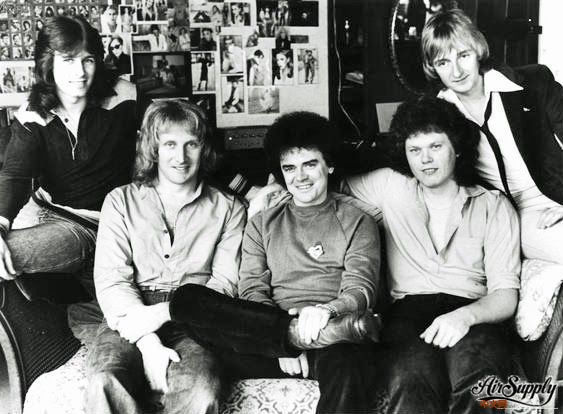
“I went to Australia to meet with the guys from Air Supply to tell them I had a deal, because they didn’t know at this point,” said Robie Porter. “It was a pretty weak deal to start with. There was just one single with an option for another one. If Arista liked that they would go to the album. But it was deal. When I went to see Air Supply only four of them showed up. I said, ‘Where’s Graham?’ They said, ‘Well, we didn’t tell you this, but Air Supply’s broken up. We are all broke and on the dole. Graham’s gone back to England.’ One of them couldn’t pay child support so he lost his passport. They told me they had broken up because their last concert tour pulled only six people at a show in Canberra. They were brilliant soundwise, but in person they were quite boring, and that was one reason why they didn’t pull audiences at that time. So they told me there is no more Air Supply. I said, ‘Let’s see what happens with the single.’”
“The moment I heard ‘Love In Love,’ I thought it would be a hit,” said Clive Davis. “I was not aware of the group’s background as a moderately well-known duo in their home country, that they’d released a 1977 album on Columbia in the States that had flopped, or that ‘Lost In Love’ had been passed on by at least ten American record companies. Even if I had known all that, it wouldn’t have mattered. I don’t base my decisions on whether something has made the rounds and been rejected before finding its way to me. The only things I judge are material and performance. The Australian single came to me from Billy Meshel, the head of Arista Music Publishing, and the A&R man Bud Scoppa. I contacted Air Supply’s producer, Robie Porter, without realizing that the duo, Russell Hitchcock and Graham Russell, were actually on the brink of breaking up. Porter had decided to take one last shot at finding a receptive ear in the States. I immediately made a deal to release it as a single, with an option to release an album, but first, I wanted to enhance the record. I didn’t ask for one change in the song itself, in the melody, the lyric, or the lead vocal, but I felt that the production could be stronger. My A&R man Rick Chertoff, a young producer-engineer named William Wittman, and I did additional production on the track, not simply remixing it but adding background vocals and other overdubs to make the song more competitive on radio. Porter and the band, at first, thought we should leave the record alone, but I really envisioned something more sweeping, a fuller, more radio-ready approach. So at the end of 1979, we made the changes.” |
|